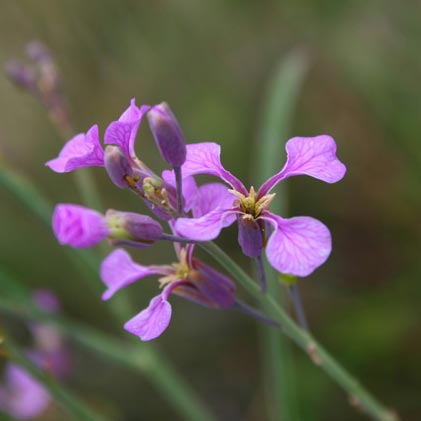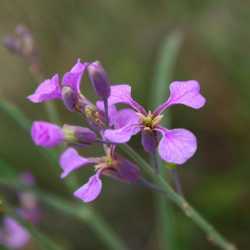Perennials or subshrubs; (caudex well-developed, woody); not scapose; (glaucous), glabrous. Stems (simple or few to several from base), erect or ascending, usually branched distally. Leaves cauline; not rosulate, petiolate, subsessile, or sessile, blade (somewhat fleshy, becoming leathery when dry, base not auriculate), margins entire, denticulate, or coarsely dentate. Racemes (corymbose, few- to several-flowered, sometimes bracteate proximally), elongated in fruit. Fruiting pedicels divaricate to ascending or suberect, slender. Flowers: sepals ascending to erect, oblong, lateral pair usually not saccate basally (slightly saccate in H. linearifolius, apex of median pair cucullate or not); petals white, lilac, lavender, purple, or yellow (sometimes with darker veins), spatulate, claw differentiated or not from blade; stamens tetradynamous or subequal; filaments not dilated basally; anthers oblong to linear, (apex obtuse or apiculate); nectar glands: lateral annular or lunar, median glands often confluent with lateral. Fruits sessile or stipitate, linear, not torulose, terete or slightly latiseptate; valves each with prominent midvein; replum rounded; septum complete; ovules 8-110 per ovary; style distinct; stigma capitate or conical, entire or 2-lobed (lobes prominent, connivent). Seeds uniseriate, plump, not winged, oblong; seed coat not or slightly mucilaginous when wetted; cotyledons incumbent or obliquely so. x = 11.




